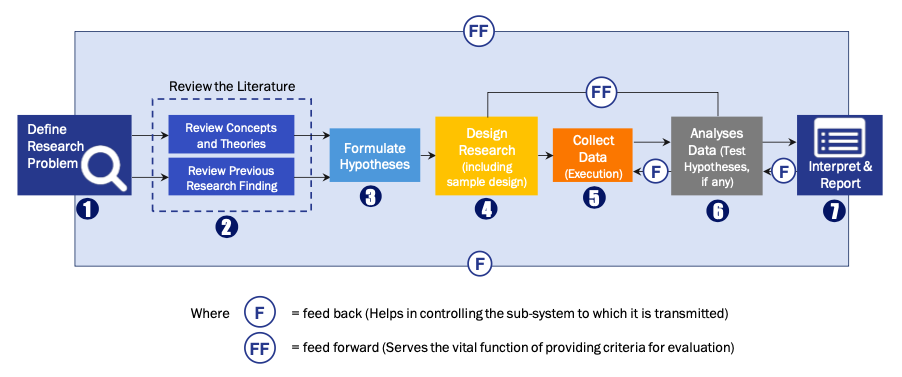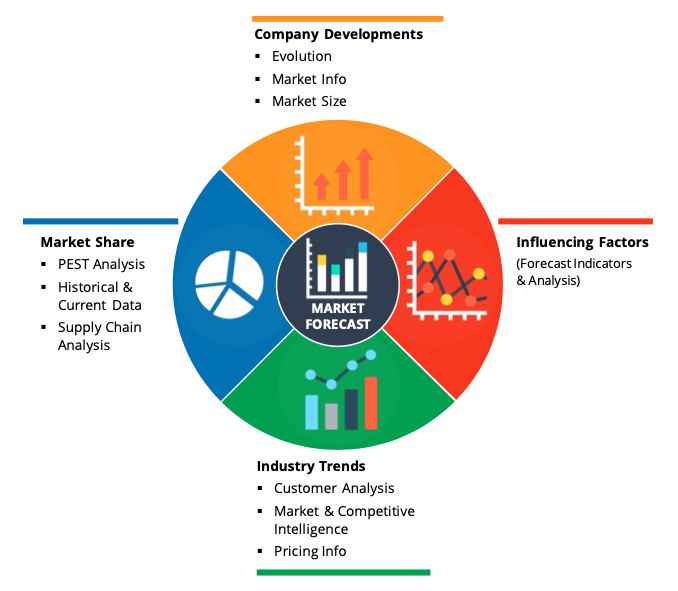Bio-hacking is treatment where implants and drug are used in improving cognitive functions both internally and externally, to sharpen memory, cognition, or creativity. It is related to several nootropic drugs that are used to develop focus and intellligence. The rising use of the RFID technology, incorporation of internet of things (IoT), growing inclusion of consumer electronics and fitness, and others can affect the market development. Though, the lack of the security can trigger adverse results. The implantations can be hacked, that can create problems. Though, other factors such as rising elderly population, and will to counter the chronic diseases are anticipated to push market growth in coming years.
Segment Overview
Currently, the wearable analytic technological products are available widely. The present generation have positive approach towards Bio-hacking and devices. Tracking of heart steps, rate, blood sugar level, and the movement of body, burning calories or other metrics, can be labelled as Bio-hacking through the analytics. The choices in terms of the Bio-hacking to keep the track of one’s biological routine are innovative, wide ranging, and ever growing.
Regional Overview
Bio-hacking has brought out absolute change in field of synthetic biology. Bio-hacking have settled an urge of innovation and development of new products. It combines aspects of synthetic biology and technology. Laboratory experiments are directed by the research individuals and scientist to explore the new avenues in genetic engineering, biotechnology, and molecular biology. Bio-hackers embark on the numerous experimentations on body such as insertion of microchips to regulate the stress level and to monitor a heart rate. Bio-hackers have advanced and are in process of developing numerous products to discover the human body. Some of remarkable products include microchips, smart drugs, magnetic fingertips, RFID implants, brain sensors, yeast strains, bacteria, body sensors, and the smart BP monitor health trackers.
Competitor overview
The global market for the bio-hacking is showing huge potential owing to participation shown by numerous companies. The companies are participating substantially to trigger the growth in the market as the investments are concentrating towards numerous market strategies such as merger, innovation, marketing, acquisition, branding, and others. The companies have been reported and
In September 2019, international bio-hacker company confirmed that they are to make a cheaper variety of gene therapy which would considerably lower price in the market and would also assist in the healthier reaching of medicine to numerous patients. The medicine in the question is Glybera which can be used for hereditary diseases and the per treatment costs $ 1 million. The drug is the first-of-its-kind.
Key Players
- Synbiota
- Thync Global Inc.
- HVMN, Inc.
- Apple
- THE ODIN
- MoodMetric
- Fitbit, Inc.
Market Segmentation
By Type
- Inside Bio-Hacking
- Outside Bio-hacking
- Sensors
- Smart Drugs
- Strains
- Others
- Synthetic Biology
- Genetic Engineering
- Forensic Science
- Diagnosis & Treatment
- Drug Testing
- Others
- North America
- US
- Canada
- Europe
- UK
- Germany
- France
- Italy
- Spain
- Rest of Europe
- Asia-Pacific
- Japan
- China
- India
- Australia
- South Korea
- Rest of Asia-Pacific
- LAMEA
- Brazil
- Saudi Arabia
- UAE
- Rest of LAMEA
1 Report Prologue 15
2 Market Introduction 19
- 2.1 Introduction 19
- 2.2 Scope of Study 19
- 2.3 Research Objective 20
- 2.4 Assumptions & Limitations 20
- 2.4.1 Assumptions 20
- 2.4.2 Limitations 20
- 2.5 Market Structure 21
3 Research Methodology 22
- 3.1.1 Primary Research Methodology 23
- 3.1.2 Secondary Research Methodology 24
- 3.1.3 Market Share Analysis 25
- 3.1.4 Trade Analysis 25
4 Market Dynamics 27
- 4.1 Introduction 27
- 4.2 Drivers 28
- 4.2.1 Rising prevalence of chronic disease (45%) 28
- 4.2.2 Growing awareness about biohacking (25%) 29
- 4.2.3 Increasing demand for innovative medical devices and sensors (30%) 30
- 4.3 Restraints 31
- 4.3.1 Lack of cyber security practices 31
- 4.4 Opportunities 32
- 4.4.1 Technological advancement 32
- 4.5 Mega Trends 32
- 4.5.1 Exploration of future biohacking products on rise 32
- 4.6 Macroeconomic indicators 33
5 Market Factor Analysis 34
- 5.1 Value Chain Analysis 34
- 5.1.1 Primary activities 34
- 5.1.2 Secondary activities 35
- 5.2 Porters Five Forces Model 36
- 5.2.1 Bargaining Power of Suppliers 37
- 5.2.2 Bargaining Power of Buyers 37
- 5.2.3 Threat of New Entrants 37
- 5.2.4 Threat of Substitutes 37
- 5.2.5 Intensity of Rivalry 38
6 Global Biohacking Market, By Type 39
- 6.1 Introduction 39
- 6.2 Outside Biohacking 40
- 6.3 Inside Biohacking 40
7 Global Biohacking Market by Product 41
- 7.1 Introduction 41
- 7.2 Smart Drugs 42
- 7.3 Sensors 44
- 7.4 Strains 45
- 7.5 Others 46
8 Global Biohacking Market by Application 47
- 8.1 Introduction 47
- 8.2 Synthetic Biology 48
- 8.3 Genetic Engineering 49
- 8.4 Forensic science 51
- 8.5 Diagnosis & Treatment 51
- 8.6 Drug testing 53
- 8.7 Others 53
9 Global Biohacking Market, By End User 54
- 9.1 Introduction 54
- 9.2 Pharmaceutical & Biotechnology Companies 55
- 9.3 Forensic Laboratories 55
- 9.4 Others 56
10 Global Biohacking Market, By Region 57
- 10.1 Introduction 57
- 10.2 Americas 58
- 10.2.1 U.S. 63
- 10.2.2 Canada 65
- 10.2.3 South America 68
- 10.3 Europe 72
- 10.3.1 Germany 76
- 10.3.2 France 79
- 10.3.3 U.K 82
- 10.3.4 Italy 85
- 10.3.5 Spain 88
- 10.3.6 Rest of Western Europe 91
- 10.3.7 Eastern Europe 94
- 10.4 Asia Pacific 98
- 10.4.1 Japan 103
- 10.4.2 China 105
- 10.4.3 India 108
- 10.4.4 Australia 111
- 10.4.5 Republic of Korea 114
- 10.4.6 Rest of Asia Pacific 117
- 10.5 Middle East & Africa 121
- 10.5.1 United Arab Emirates 125
- 10.5.2 Saudi Arabia 128
- 10.5.3 Oman 131
- 10.5.4 Kuwait 134
- 10.5.5 Qatar 137
- 10.5.6 Rest of Middle East & Africa 140
11 Company Landscape 144
- 11.1 Introduction: Key Players 144
- 11.2 Company Share Analysis 144
12 Company Profile 145
- 12.1 Fitbit, Inc. 145
- 12.1.1 Company Overview 145
- 12.1.2 Financials 145
- 12.1.3 Products 145
- 12.1.4 Strategy 145
- 12.1.5 Key Developments 145
- 12.2 Apple 146
- 12.2.1 Company Overview 146
- 12.2.2 Financials 146
- 12.2.3 Products 146
- 12.2.4 Strategy 146
- 12.2.5 Key Developments 146
- 12.3 Synbiota 147
- 12.3.1 Company Overview 147
- 12.3.2 Financials 147
- 12.3.3 Products 147
- 12.3.4 Strategy 147
- 12.3.5 Key Developments 147
- 12.4 THE ODIN 148
- 12.4.1 Company Overview 148
- 12.4.2 Financials 148
- 12.4.3 Products 148
- 12.4.4 Strategy 148
- 12.4.5 Key Developments 148
- 12.5 HVMN, Inc. 149
- 12.5.1 Company Overview 149
- 12.5.2 Financials 149
- 12.5.3 Products 149
- 12.5.4 Strategy 149
- 12.5.5 Key Developments 149
- 12.6 Thync Global Inc., U.S.A. 150
- 12.6.1 Company Overview 150
- 12.6.2 Financials 150
- 12.6.3 Products 150
- 12.6.4 Strategy 150
- 12.6.5 Key Developments 150
- 12.7 MoodMetric 151
- 12.7.1 Company Overview 151
- 12.7.2 Financials 151
- 12.7.3 Products 151
- 12.7.4 Strategy 151
- 12.7.5 Key Developments 151
13 Conclusion 152
- 13.1 Key Findings 152
- 13.1.1 CEO’s Viewpoint 152
- 13.1.2 Unmet Needs 152
- 13.1.3 Key Companies to Watch 152
- 13.1.4 Prediction of Biohacking Industry 152
14 Appendix 154
- 14.1 Discussion Blue Print 154
- 14.2 References 156
Data Library Research are conducted by industry experts who offer insight on industry structure, market segmentations technology assessment and competitive landscape (CL), and penetration, as well as on emerging trends. Their analysis is based on primary interviews (~ 80%) and secondary research (~ 20%) as well as years of professional expertise in their respective industries. Adding to this, by analysing historical trends and current market positions, our analysts predict where the market will be headed for the next five years. Furthermore, the varying trends of segment & categories geographically presented are also studied and the estimated based on the primary & secondary research.
In this particular report from the supply side Data Library Research has conducted primary surveys (interviews) with the key level executives (VP, CEO’s, Marketing Director, Business Development Manager and SOFT) of the companies that active & prominent as well as the midsized organization
FIGURE 1: DLR RESEARH PROCESS

Extensive primary research was conducted to gain a deeper insight of the market and industry performance. The analysis is based on both primary and secondary research as well as years of professional expertise in the respective industries.
In addition to analysing current and historical trends, our analysts predict where the market is headed over the next five years.
It varies by segment for these categories geographically presented in the list of market tables. Speaking about this particular report we have conducted primary surveys (interviews) with the key level executives (VP, CEO’s, Marketing Director, Business Development Manager and many more) of the major players active in the market.
Secondary ResearchSecondary research was mainly used to collect and identify information useful for the extensive, technical, market-oriented, and Friend’s study of the Global Extra Neutral Alcohol. It was also used to obtain key information about major players, market classification and segmentation according to the industry trends, geographical markets, and developments related to the market and technology perspectives. For this study, analysts have gathered information from various credible sources, such as annual reports, sec filings, journals, white papers, SOFT presentations, and company web sites.
Market Size EstimationBoth, top-down and bottom-up approaches were used to estimate and validate the size of the Global market and to estimate the size of various other dependent submarkets in the overall Extra Neutral Alcohol. The key players in the market were identified through secondary research and their market contributions in the respective geographies were determined through primary and secondary research.
Forecast Model





